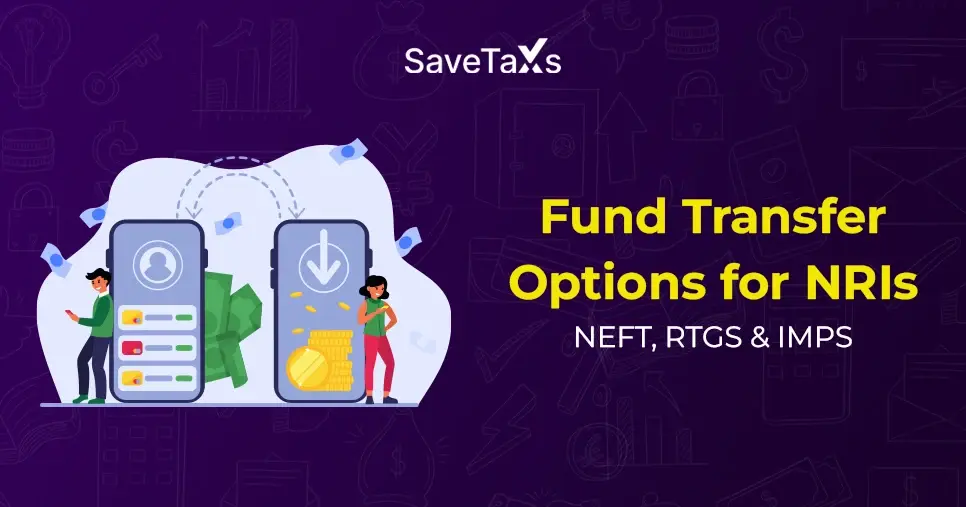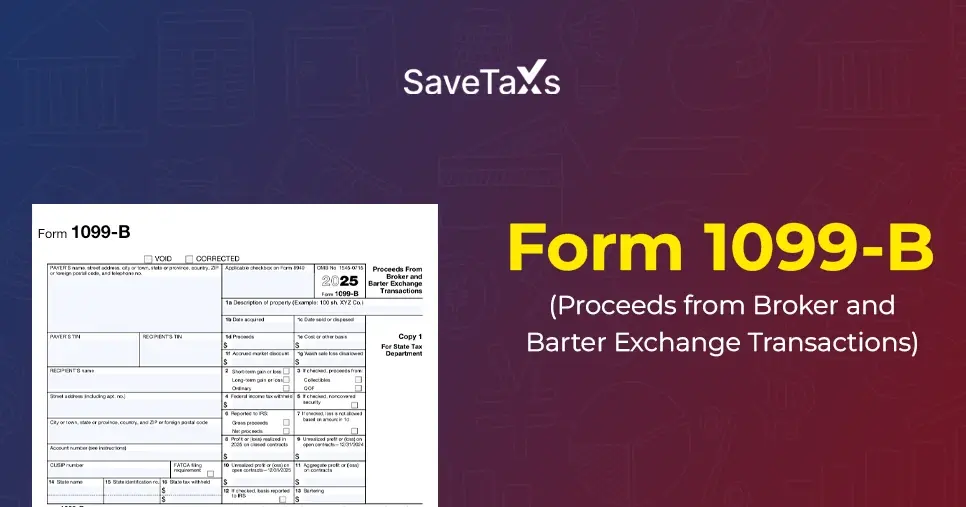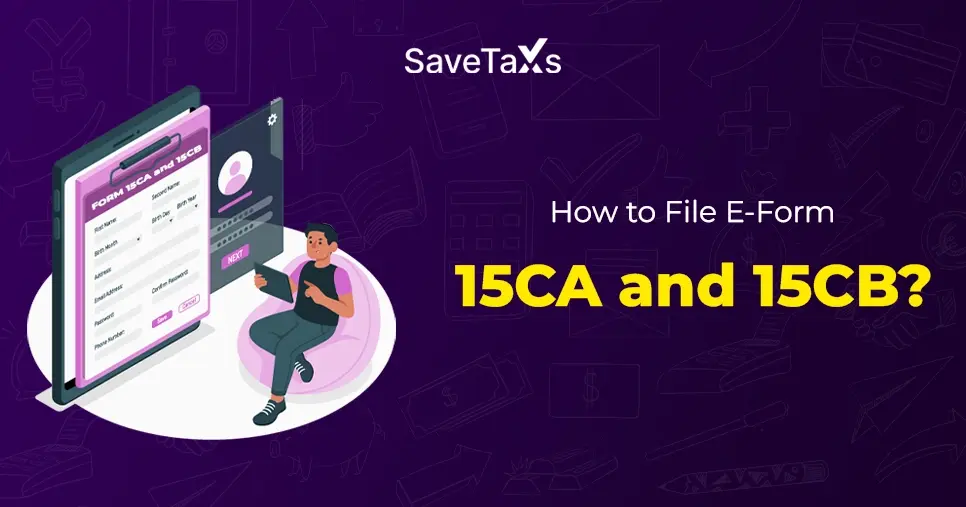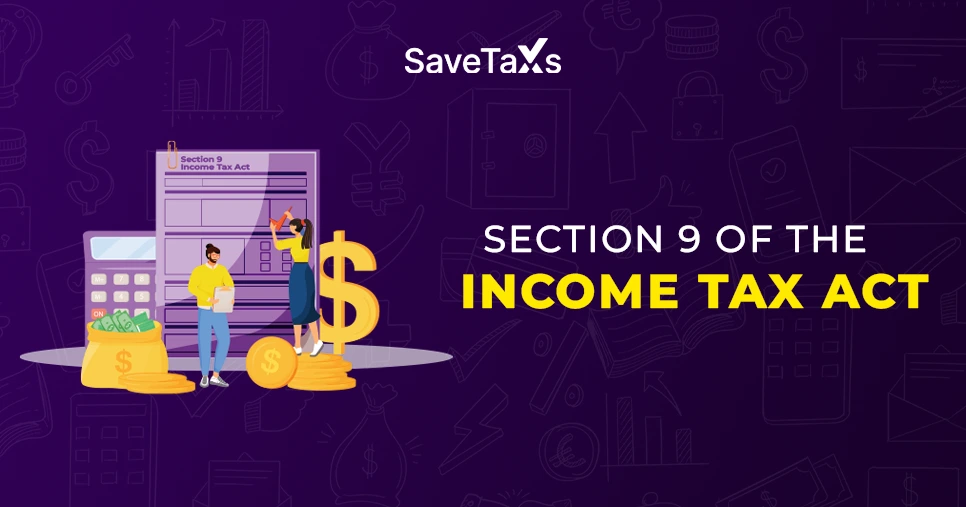A surcharge is an extra charge payable by individuals or entities with higher income on their income tax. Additionally, marginal relief is a provision that helps individuals reduce their significant tax burden. Generally, this situation is faced by high-income taxpayers in India, whether Indian or non-Indian residents (NRIs).
Want to know more about income tax surcharge and marginal relief, and who they apply to? Read the blog that explains these income tax terms in detail, along with examples.
What is Income Tax Surcharge?
As mentioned above, a surcharge is an additional amount that individuals or entities with higher income have to pay on their income tax. Based on the income tax brackets, a surcharge is a percentage of the payable income tax imposed on individuals or entities with higher income.
In 2025, for individuals whose income is more than INR 50,00,000 in a financial year, depending on their increased income, 10% to 25% surcharge will be applicable. The surcharge aims to increase the tax liability of the wealthier section. After the income tax, the surcharge is calculated and increases the total tax payable by the individual.
This was all about the income tax surcharge. Moving ahead, let's know under the new and old tax regimes the surcharge rate on individuals.
Income Tax Surcharge Rates on Individuals: Old vs New Tax Regime
Here are the income tax surcharge rates on individuals under the old and new tax regimes:
| Net Income Taxable Limit (in INR) |
Under the old tax regime rate of surcharge on the income tax amount |
Under the new tax regime rate of surcharge on the income tax amount |
| Less than INR 50,00,000 |
- |
- |
| More than INR 50,00,000, less than INR 1crore |
10% |
10% |
| More than INR 1 crore and less than INR 2 crore |
15% |
15% |
| More than INR 2 crore and less than INR 5 crore |
25% |
25% |
| More than INR 5 crore |
37% |
25% |
*Note: A 15% surcharge is applicable on AOPs with income more than INR 1crore during the fiscal year and that only have companies as their members
These are the income tax surcharge rates on individuals under the new and old tax regimes. For both Indian residents and NRIs, the surcharge rates remain the same. Moving further, let's know its rate on capital gains.
What Is the Income Tax Surcharge Rate on Capital Gains?
The capital gains and dividend income are stated under sections 111A, 112, and 112A of the Income Tax Act; on them, a 15% surcharge is applicable. Confused, let's better understand this through an illustration.
Suppose Mr. D is an individual living in India. During the fiscal year 2024-25, he has earned the following income in India:
- Income from business: INR 3 crores
- Capital gains earned under section 112A: INR 50,00,000
- Capital gains earned under section 111A: INR 75,00,000
- Capital gains earned under section 112: INR 1, 25,00,000
The total income earned by Mr. D in the financial year 2024-25 is INR 5,05,00,000. If these incomes were the normal income, 37% was imposed on Mr. D. However, his total income includes the capital gains earned under sections 111, 112, and 112A. So, on capital gains, irrespective of the amount earned from it, only a 15% surcharge will be levied on them. Additionally, on income other than capital gains, i.e., business income 25% surcharge will be imposed as it is INR 3 crores. The surcharges payable by Mr. D are 15% (on capital gains) and 25% (on business income).
This is all about the income tax surcharge rate on capital gains and how it is imposed on individuals. Moving ahead, let's know about the surcharge rates for the company.
Worried about NRI Tax Filing?
Stay compliant, claim DTAA benefits & avoid double taxation.
What are the Income Tax Surcharge Rates for the Company?
The table below showcases the income tax surcharge rates for the company
| Net Income Taxable Limit |
Under the normal provisions rate of surcharge on the income tax amount |
Under sections 115BAA or 115BAB rate of surcharge on the income tax amount |
| Less than INR 1 crores |
- |
10% |
| More than INR 1crores and less than INR 10 crores |
7% |
| More than INR 10 crores |
12% |
*Note: Under section 115BAA or section 115BAB of the Income Tax Act, 1961, a 10% surcharge is applicable on companies opting for special tax rates irrespective of the earned income. However, as there are no tax exemption limits stated under these sections for surcharge, no marginal relief will be provided to the companies.
This was all about the surcharge rate for companies in India. Moving further, let's know the income tax surcharge rates for foreign companies and Indian firms/ local authorities, and LLP.
Surcharge Rate for Foreign Company
The income tax surcharge rate for a foreign company is as follows:
| Net income taxable limit |
Surcharge rate on the income tax amount |
| More than INR 1 crore and less than INR 10 crore |
2% |
| More than INR 10 crore |
5% |
Income Tax Surcharge Rates for Firm/ LLP/ Local Authority
The income tax surcharge rates for firms/LLPs/ local authorities whose income exceeds more than INR 1 crore in a financial year are liable to a 12% surcharge on their taxed amount.
These are the income tax surcharge rates for a foreign company, an Indian firm, LLP, and local authorities. Furthermore, let's know about the marginal relief in income tax.
Marginal Relief in Income Tax
Marginal relief is a provision introduced by the Income Tax Act, 1961, to reduce the tax burden of individuals who have income more than the specific tax limit, especially those whose income is more than INR 50,00,000 in a fiscal year. Through this relief, the taxpayers, when their income is more than a specific limit during a fiscal year, can avoid an increase in their tax liability. The marginal relief certifies that the additional payment of tax is proportional to the increased amount of income.
This relief is mainly applicable to individuals in India whose income does not fall under the basic tax exemption limit and who have an income of more than INR 12,00,000 in the financial year 2025-26. With marginal tax relief, individuals are saved from paying a higher tax due to a small increase in their income. However, this tax relief does not apply to taxpayers whose total income is more than 12,75,000.
This was all about marginal relief in income tax. Moving ahead, let's know the changes proposed for this relief in the Union Budget 2025.
Marginal Relief Changes Proposed in Union Budget 2025
These are the following key changes were stated in the Union Budget 2025 in the Income Tax for the financial year 2025-26:
- Income up to INR 12,00,000 is tax-exempt under the new tax regime. However, standard deduction will be applicable on salaries taxpayers whose income is INR 12,75,000.
- In the financial year 2025-26, starting from 1 April 2025, the rebate limit has been increased from INR 25,000 to INR 60,000. It makes the marginal relief available for taxpayers whose income is over INR 12,00,000.
- Under section 87A of the Income Tax Act, marginal relief certifies that the tax charged on income more than INR 12,00,000 during a financial year does not go above the increment amount of the maximum INR 12,75,000.
- For Indian residents whose income ranges between INR 12,00,000 to INR 12,75,000, marginal relief is beneficial, saving them from paying extra tax on a small rise in income.
These are some of the changes proposed for marginal relief in the Union Budget 2025. Moving further, let's know to whom this relief is applicable.
On Whom Marginal Relief is Applicable?
Marginal relief is applicable to the following:
- It is only available for Indian residents.
- Both salaried and non-salaried taxpayers can benefit from this relief.
- Applicable on income taxable between INR 12,00,000 and INR 12,75,000.
So, from the above information, marginal relief is only available for Indian residents with a certain taxable income. It is not available for NRIs and Hindu Undivided Families (HUFs). Also, not applicable to the taxable income more than INR 12,75,000. Considering this, on that increased income, taxes at the regular rate will be charged.
This is all about who marginal relief is applicable to. Moving ahead, let's now the about this relief for individuals.
Marginal Relief on Income Tax Surcharge for Individuals
As mentioned above, marginal relief is provided to individuals to avoid paying extra tax on the income due to a certain small arise in it. As on the increased income, a surcharge is imposed by the tax officials for earning more than the threshold limit during a financial year. Through this relief, you only pay the tax on the difference amount, not more than what you earned. Confused? Let us better understand this through some illustrations.
Case 1
If the total income is more than INR 50,00,000 but less than INR 1 crore. In this scenario, that person is liable to pay a 10% surcharge on his calculated income tax. However, as per income tax provisions, to certain taxpayers in India, a marginal relief will be provided up to the difference between the extra payable tax (surcharge included) and the excess amount over INR 50,00,000.
Now, suppose Mr. A is a taxpayer who has INR 51,00,000 during the financial year 2024-25. From the above-mentioned information, calculate the marginal relief available for him.
- Mr. A is liable to pay a 10% surcharge on this total taxable income, i.e., INR 14,76,750.
- However, instead of INR 51,00,000, if he had earned only INR 50,00,000, then his tax liability would be INR 13,12,500 only excluding cess.
Here, for just an INR 1,00,000 increase in his income, Mr. A is liable to pay an extra tax of INR 1,64,250.
However, he can avoid so and pay the difference amount through marginal relief, i.e., INR 14,76,740 - INR 13,12,500 = INR 1,64,250, and the exceeding income is INR 51,00,000 - INR 50,00,000 = INR 1,00,000. The marginal relief Mr. A will get is INR 64,250 (INR 1,64,250 - INR 1,00,000). Additionally, he income tax liability will be INR 14,12,500 excluding cess on income INR 51,00,000 during a financial year.
Case 2
If the total income of the taxpayer is more than INR 1 crore but less than INR 2 crore in a financial year. In this scenario, a 15% surcharge will be imposed on the taxable income. Additionally, in the difference amount, i.e., between the excess payable tax (including surcharge) on income more than INR 1 crore minus the exceeding amount more than INR 1 crore. Let's understand this with an example.
Illustration: Suppose Mr. E is a taxpayer. His total income in any financial year is INR 1,01,00,000. From the above-stated information, he is liable to pay a 15% surcharge on his taxable income, i.e., the total tax payable is INR 32,68,875. However, instead of INR 1,01,00,000 if he had earned only INR 1 crore, his taxable income would be INR 30,93,750.
Here, for earning just INR 1,00,000 extra, he had to pay INR 1,75,125. He can avoid paying this much amount and only pay the difference amount through marginal relief, i.e., excess tax payable on higher income, i.e., INR 1,75,125 - the amount he earned extra, i.e., INR 1,00,000. From the calculation, the marginal relief Mr. E gets is INR 75,125. Therefore, the tax liability of Mr. E on income INR 1 crore will be INR 31,93,750.
*Note: In both the above-mentioned cases, if tax is paid according to the new tax regime, the surcharge rate will remain the same; however, the income tax slab rate can be changed as per the tax regime.
This is all about the marginal relief applicable to individuals. Moving ahead, let's know the marginal relief for companies.
Marginal Relief on Surcharge for Companies (Income > INR 1 Crore but ≤ INR 10 Crore)
The table below, according to scenario, shows the applicable marginal relief on surcharge for companies' income > INR 1 crore but ≤ 10 crore during a financial year:
| Scenario |
Indian Company |
Foreign Company |
| Gross income of the company during a financial year |
INR 1,05,00,000 |
INR 1,05,00,000 |
| Payable income tax without surcharge |
INR 31,20,000 |
INR 31,20,000 |
| Surcharge rate |
7% |
2% |
| Total payable tax with surcharge (domestic) |
INR 31,20,000 + 7% surchare = INR 33,34,400 |
INR 31,20,000 + 2% surcharge = INR 31,84,400 |
| Payable tax on INR 1 crore (without surcharge) |
INR 31,20,000 |
INR 31,20,000 |
| Additional payable tax due to higher income |
INR 33,34,400 - INR 31,20,000 = INR 2,14,400 |
INR 31,84,400 - INR 31,20,2000 = INR 64,400 |
| Excess income more than INR 1 crore |
INR 5,00,000 |
INR 5,00,000 |
| Marginal Relief |
INR 2,14,400 - INR 5,00,000 = INR 0 (no marginal relief, as excess tax is less than excess income) |
INR 64,400 - INR 5,00,000 = INR 0 (no marginal relief as excess tax is less than excess income) |
| Payable tax after marginal relief |
INR 33,34,400 |
31,84,400 |
*Explanation:
- Income of Indian company: INR 1,05,00,000
- Payable tax without surcharge: INR 31,20,000
- Surcharge (7%): INR 2,14,400
- Excess Income: INR 5,00,000
- No Marginal Relief: It is because the excess tax (INR 2,14,400) is less than the excess income (INR 5,00,000). So no marginal relief is provided.
- Foreign Company: INR 1,05,00,000
- Payable tax without surcharge: INR 31,20,000
- Surcharge (2%): INR 64,400
- Excess Income: INR 5,00,000
- No marginal relief: It is because the excess tax (INR 64,400) is lower than the excess income (INR 5,00,000). So no marginal relief will be provided.
This was all about marginal relief on the surcharge for companies whose income is more than INR 1 crore but less than INR 10 crore in a financial year. Moving further, let's know about the marginal relief for firms/ local authorities/LLPs.
Marginal Relief for Firms/ Local Authorities/ LLP (Income > INR 1 Crore)
The table below showcases the applicable marginal relief on surcharge for firms/ LLP/ local authorities whose income during the financial year is more than INR 1 crore:
| Scenario |
Details |
| Total income of the firm |
INR 1,01,00,000 |
| Payable income tax without surcharge |
INR 31,20,000 |
| Surcharge Rate |
12% |
| Total payable tax with surcharge on INR 1,01,00,000 |
INR 32,24,000 |
| Payable tax on INR 1 crore without surcharge |
INR 31,20,000 |
| Excess payable tax due to higher income |
INR 32,24,000 - INR 31,20,000 = INR 1,04,000 |
| Excess income above INR 1,00,00,000 |
INR 1,00,000 |
| Marginal Relief |
INR 1,04,000 - INR 4,000 |
| Payable tax after marginal relief |
INR 32,24,000 - INR 4,000 = INR 32,20,000 |
*Explanation:
- Total income of the firm: INR 1,01,00,000
- Payable tax on INR 1,01,00,000 (including 12% surcharge): INR 32,24,000
- Payable tax on INR 1,00,00,000: INR 31,20,000 (without surcharge)
- Excess Tax: The additional INR 1,00,000 leads to an extra tax of INR 1,04,000
- Marginal relief: INR 4,000 is the marginal relief received by the firm. It is the difference between the excess tax and the excess income.
The above calculation states that if the total income of the firm does not exceed INR 1,00,00,000, then it would not be liable to pay tax on that extra amount, i.e., INR 1,00,000.
Need Help with NRI Taxes?
Stay Compliant with Indian Tax Laws, Claim Deductions, and Avoid Penalties.
Final Thought
To get additional funds, the government of India on high-income corporations and people imposed such taxes like an income tax surcharge. However, to provide them some relief also introduced provisions like marginal relief. Here, the complete blog was on the income tax surcharge and marginal relief. Hope after reading it, you gain some understanding.
With this, when we talk about taxes, we all look for tax-saving options. The Income Tax Act has introduced several tax provisions to reduce the tax liability of taxpayers. Want to know about them? Contact SaveTaxs, and our experts will tell you about all the applicable tax provisions as per your situation. Through this, you will be able to maximize your tax refund and avoid paying higher taxes. So connect with us today and get these tax benefits.
*Note: This guide is for informational purposes only. The views expressed in this guide are personal and do not constitute the views of Savetaxs. Savetaxs or the author will not be responsible for any direct or indirect loss incurred by the reader for taking any decision based on the information or the contents. It is advisable to consult with either a Chartered Accountant (CA) or a professional Company Secretary (CS) from the Savetaxs team, as they are familiar with the current regulations and help you make accurate decisions and maintain accuracy throughout the whole process.
 India
India
 USA
Tax Consultancy Services
USA
Tax Consultancy Services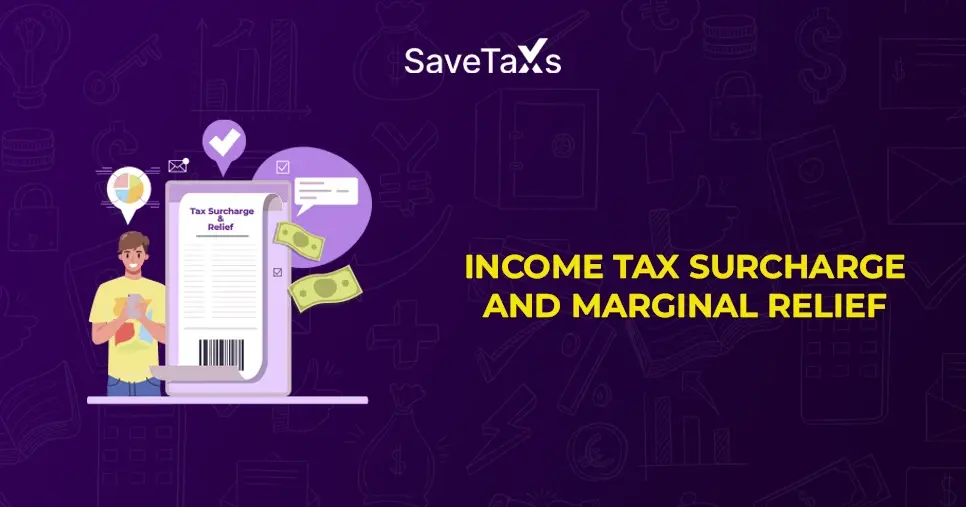

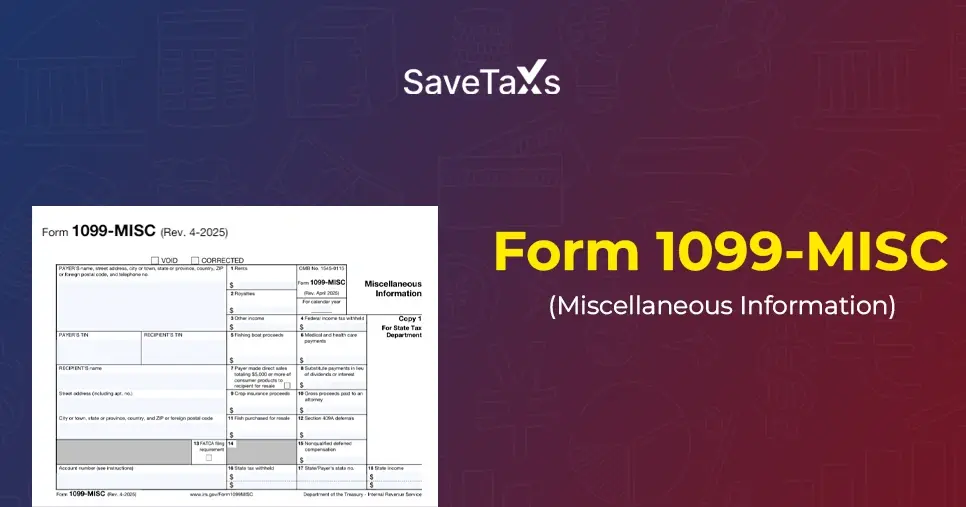


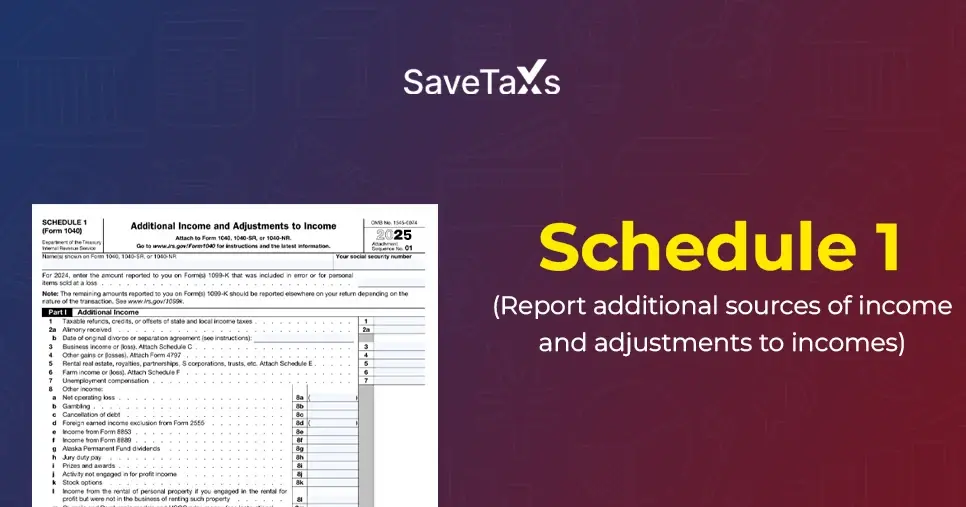

-DEDUCTION-ON-HOSUING-LOAN_1756903528.webp)
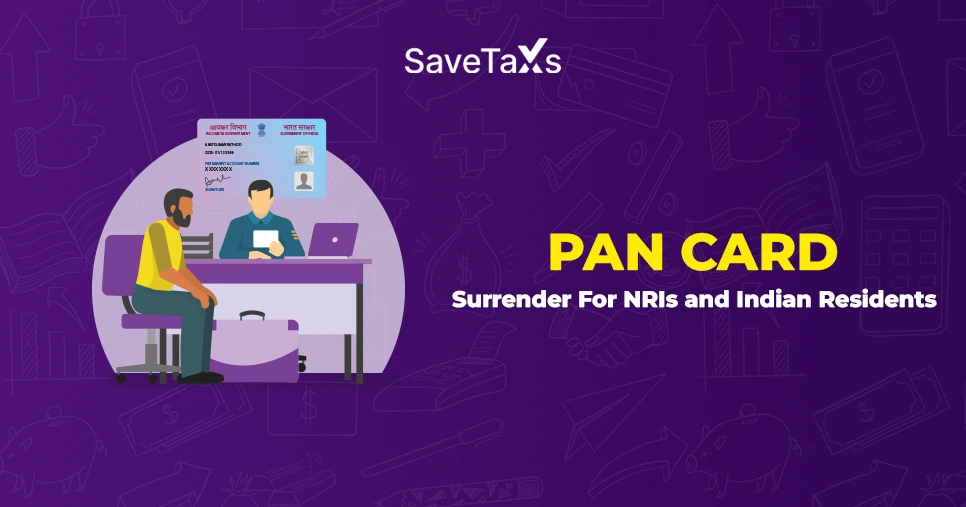


_1760618042.webp)
_1752921287.webp)
